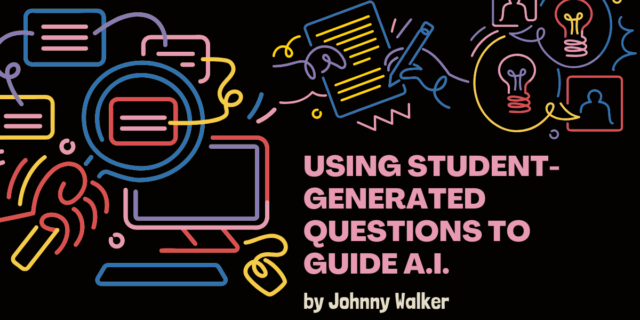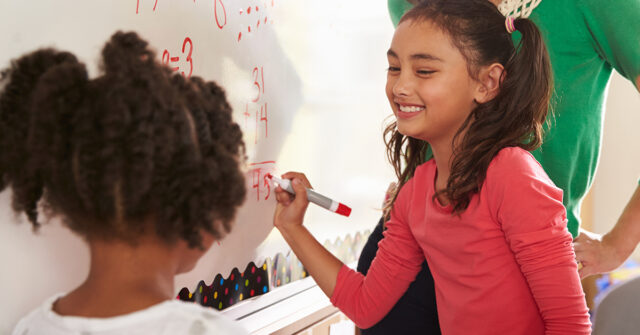
When kids tackle real world challenges that are happening right here, right now in their communities, their engagement and interest soars. As kids explore authentic questions and build their knowledge store through research and investigation, they develop agency and expertise that may lead them to take collective action. Integrating science and literacy instruction provides opportunities for kids to investigate local climate and environmental issues, as well as learn about what’s happening on a more global scale.
According to a UNESCO report (2011), 95% of teachers surveyed thought it was important to teach about climate issues and challenges, but less than 50% of teachers reported their schools had plans for doing so. To support teachers to tackle these instructional challenges, the Colorado non-profit Classrooms for Climate Action (C4CA: https://classroomsforclimateaction.org/) partners with local elementary, middle and high school teachers to integrate climate-focused projects across the curriculum. C4CA, a group of community volunteers, many of whom are retired teachers, created a framework that teachers can use to design, create, and integrate climate-focused projects across the curriculum. But these types of projects are most successful when teachers have support from the larger community. The framework and examples that follow illustrate how to involve families, local scientists, and city governments to work toward a common goal. Sometimes kids go outside, investigate local environmental issues, and learn from community experts, naturalists, and others. Other times, kids are intrigued by issues that are further from home, but compelling enough that they read, write, and investigate to dig deeper.

Here we share a few examples of projects and lessons that integrate literacy and science instruction as kids learn about climate challenges, solutions, and resilience.
Hope for Local Waterways: Fourth Graders Take Action
Climate literacy and science instruction in three fourth grade classrooms focused on two aspects of the framework: anchoring learning to local climate phenomena and climate actions and creating opportunities to learn outside with communities beyond the classroom. When a late summer thunderstorm turned into a 100 year-flood event that severely impacted homes and people in the school’s neighborhood, this was a local issue that hit close to home. Students studied their local stream and the neighborhoods it flowed through. They documented and wrote about the stream environment. Kids spoke with and interviewed local water experts, naturalists and city officials who were developing plans for flood mitigation in the area. They experimented with different stream flow models and came to understand the science behind both the causes of floods and how plants, man-made structures and topography could impact water flow through the neighborhood. As kids gained knowledge by asking questions and engaging in research, they realized that not everyone was in agreement about the best solutions to these problems. Eventually, several students spoke in favor of the city-proposed flood mitigation plans at a city council meeting. An 8-1 vote to support the mitigation efforts taught them that speaking out and collaborative action can make a difference.

Becoming Environmental Stewards: Revitalizing a Wetlands Habitat
Third graders explored a wetlands adjacent to their school grounds, with the goal of helping to revitalize the habitat. They expanded their ways of knowing and relating to the world by working with a Dine (Navajo) educator who, by creating weavings with the students, taught them about the connections between Indigenous Knowledge of the natural world and acting on climate solutions in their own backyard. After intensive study of the plants and animals and the importance of wetlands as a climate solution, students created activities to get classrooms, families and the neighborhood engaged with their wetlands habitat. On a family workday and stewardship days, the kids will become the teachers—so that their school mates and the larger community understand how and why wetlands are an essential part of nature- based solutions to climate change.


Investigating Global Issues: Antarctica Meltdown
Fifth graders studying climate change events in various parts of the world were particularly intrigued with Antarctica. Videos of huge chunks of ice breaking off glaciers and plunging into the ocean piqued kids’ curiosity and prompted lots of questions. (see James Balog’s video Chasing Ice). It was a perfect opportunity to integrate science and literacy—engaging in inquiry and evidence-driven learning. Students read various accounts of scientific observations of melting ice on the southernmost continent. They asked questions designed to organize information and evidence around 1) what was happening, 2) why it was happening and 3) what are the consequences of these natural events. As kids read, viewed, and discussed videos, articles and online interviews with scientists, they rose to the challenge of comprehending information from different media—video, texts and interviews. They engaged in what scientists typically do: they synthesized information from different sources, created their own visuals of what’s happening and, perhaps most importantly, came up with more questions, leading to further research and investigation.
We hope these teachers and kids will inspire you to look for possibilities and create opportunities for climate education in your curriculum.
Our book, Content Literacy: Lessons and Texts for Comprehension Across the Curriculum, provides content literacy lessons designed to teach students ways to get the most out of their nonfiction reading so they can build content knowledge and actively use it. The lessons integrate the comprehension strategies in The Comprehension Toolkit and engage students in analysis, synthesis, critical reading, and thinking across the curriculum.
Click the images below to download the lesson from Content Literacy and a student article about glaciers in Antarctica featured in the featured in the Global Issues section.



Steph Harvey and Anne Goudvis are the coauthors of Strategies That Work, Inquiry Illuminated, The Comprehension Toolkit Series and Short Nonfiction for American History. Teachers first and foremost, they work in classrooms side by side with kids supporting teachers in progressive literacy practices.


